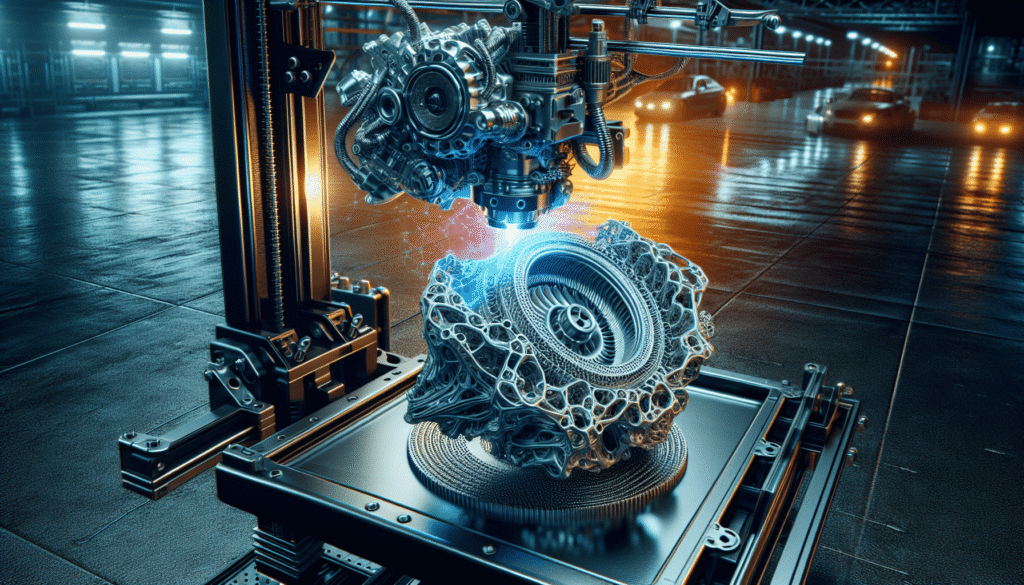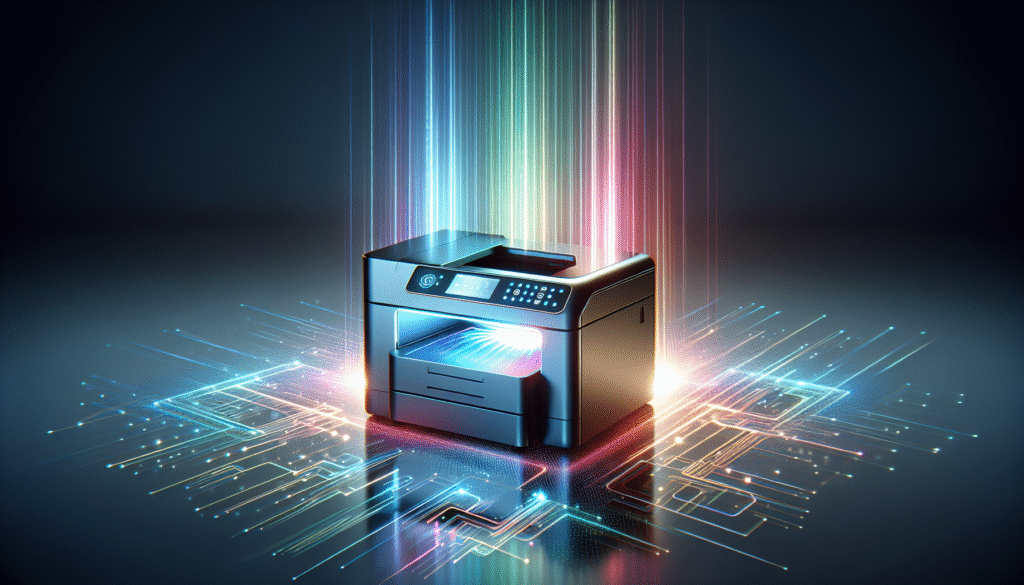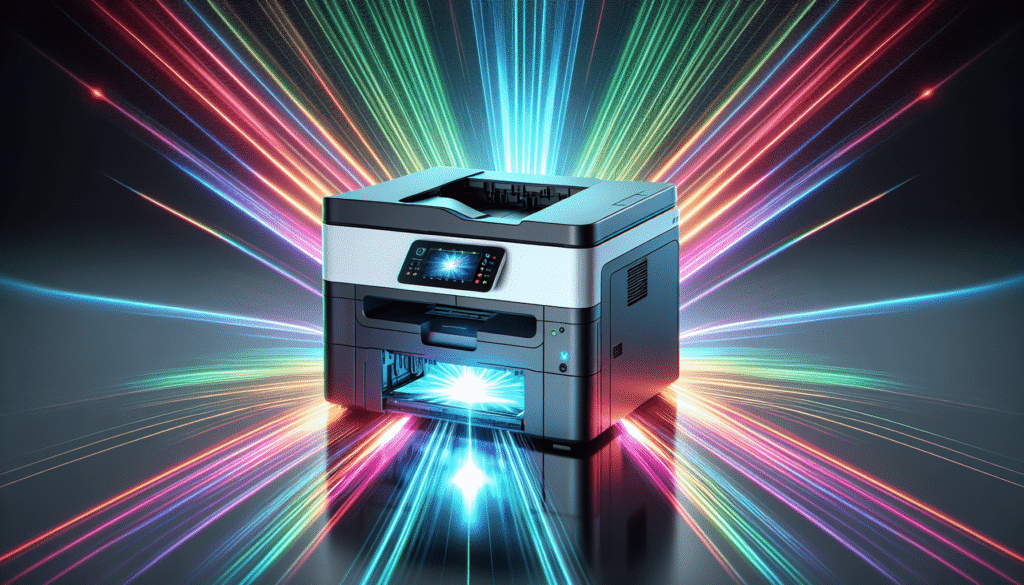? Have you ever wondered how the humble laser printer, often relegated to the corners of our offices, is undergoing a quiet revolution? It might be a mundane piece of equipment—normally fired up to spit out the latest expense report or meeting agenda—but believe it or not, these machines are embracing machine learning in ways that are truly game-changing. It’s almost like discovering that your pet goldfish is actually a certified ninja. Allow me to guide you through the fascinating world of AI-powered laser printers. We’re diving into the nitty-gritty of how these technological wonders are redefining office printing, all while maintaining a tone that’s as friendly as grandma’s peach cobbler.
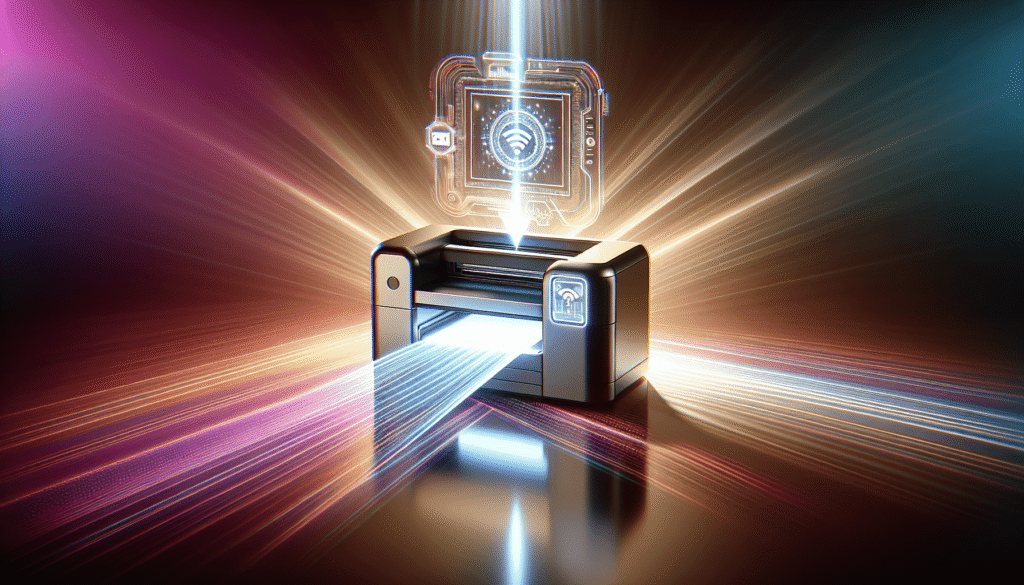
Understanding the Basics
Before wading into the deep end of AI-powered laser printers, let’s start by clarifying some of the basics. At their core, laser printers operate using a laser beam to produce an image on a drum, which then transfers toner onto paper. The process, though elegant, is mechanical in nature. But what happens when we infuse it with a bit of artificial intelligence?
What is AI in Printing?
AI, or artificial intelligence, involves computers learning from data to make decisions or predictions. When AI is introduced to printing, it’s akin to giving your printer a tiny brain. It doesn’t quite quote Shakespeare yet, but it’s getting pretty effective at predicting its own maintenance needs or choosing the most efficient way to complete tasks.
Why AI in Laser Printers?
One might question the necessity of AI in printers. Why fix what isn’t broken, right? The answer lies in efficiency, maintenance, and cost-effectiveness. By learning from patterns of use, these printers can anticipate when they might need a good old inside-out dusting or notify you if toner levels are running low—all without you manually checking every Tuesday. It’s like having a diligent butler who never thinks twice.
The Technological Revolution
Now, how exactly is machine learning turning these office staples into impressive feats of technology? This is where things get intriguing.
Predictive Maintenance
Think of this as your printer’s way of saying, “I’ve got this.” AI algorithms analyze previous breakdown data, allowing printers to predict when parts will likely fail. It’s much more appealing than waiting for a disastrous paper jam in the middle of a deadline, isn’t it?
Optimizing Print Jobs
Remember the frustration of watching your printer take its sweet time to print? AI-powered printers optimize tasks by analyzing previous print jobs. They adjust settings automatically for speed and quality without you having to fiddle with a dozen confusing settings.
Improved Accuracy
Mistakes happen—letters smudge, colors blur. But with AI, these instances are minimized. Machine learning algorithms learn the correct configurations for different print jobs, significantly reducing the chances of errors. Imagine getting the crispest printouts every time, no matter the complexity of the job.
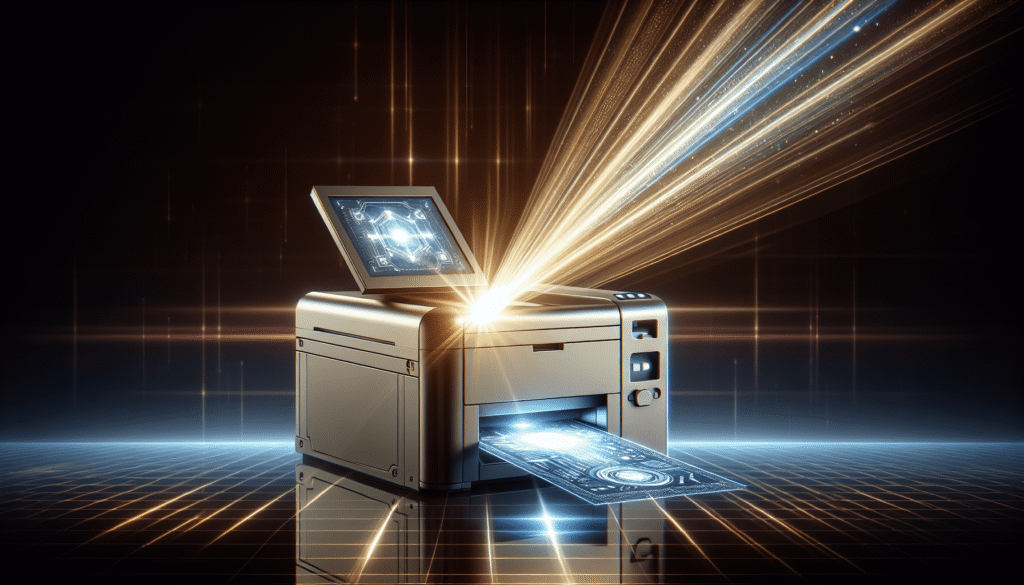
The Real-World Implications
Let’s translate these technical improvements into scenarios that resonate with us living, breathing (and sometimes technologically-challenged) humans. How do AI-powered laser printers impact our day-to-day office life?
Time Savings
How much time do we collectively waste wrestling with printers? AI reduces this significantly. Its proactive measures mean fewer disruptions, making your workday a smidge less chaotic.
Cost Efficiency
Not only does AI reduce the frequency of maintenance, but it can also optimize toner usage, saving precious dollars. This is not just good news for the bean counters but for anyone looking to reduce the environmental footprint of endless printing.
Enhanced Security
In the age of digital threats, even printers can be gateways for breaches. AI-enhanced security protocols in printers can detect unusual patterns and thwart potential security risks before they escalate.
The Integration into Office Life
Perhaps you’re wondering, “How does one bring these innovations into the humdrum of office life?” Fortunately, embracing AI-powered printers isn’t a task for the IT department alone.
Compatibility with Existing Systems
Most modern AI-powered printers are designed to integrate seamlessly with current office infrastructure—no need to dismantle everything like a puzzle. They support various platforms and can easily align with existing networks.
User-Friendly Interfaces
The idea of integrating AI might conjure images of complicated new interfaces, but in reality, it’s often the opposite. Many of these smart printers have interfaces that are simpler and more intuitive, geared toward anyone from the technologically savvy to the print-challenged.
Training and Support
Manufacturers usually provide comprehensive training and support for their AI-driven devices. So, if someone says, “I don’t know how to work the new printer,” rest assured there’s a manual or a helpful customer support rep ready to assist.
Breaking Down the Features
To make things easy—and since I have a penchant for lists—let’s break down some top features of these intelligent printers:
- Self-Diagnostics: Tired of not knowing what’s wrong? These printers will inform you of their ailments.
- Energy Efficiency: Smart power-saving modes only when the printer is idle for certain periods.
- Automated Workflows: Preprogrammed tasks that reduce manual intervention.
- Analytics Reporting: Details on usage patterns and potential improvements.
- Cloud Connectivity: Print from anywhere—granted, you have wifi.
Future Prospects and Innovations
The journey doesn’t end here. The future of AI-powered laser printers holds even greater promise and more superlative spin on our mundane tasks.
Voice Activation
Imagine saying, “Printer, print my meeting agenda,” and voilà, it begins. Integrating voice command into printers will not only be cutting-edge but a practical solution to the often dusty hands involved in the process.
Greater Personalization
Future models may allow even more customization of print settings based on personal preferences, ideal for those whose print needs range across various formats and levels.
Integration with IoT
As the Internet of Things (IoT) grows, these printers could become pivotal components in the connected office, communicating with other devices for seamless operability.
Challenges and Considerations
It wouldn’t be a balanced discussion if I didn’t also mention the flip side of this AI print revolution. As with any technology, there are considerations to keep in mind.
Initial Costs
Though they promise savings in the long run, the initial cost of adopting AI-powered laser printers may be higher. It’s the classic “invest now, save later” catch, which requires careful budgeting.
Data Privacy
With AI and connectivity come questions of data privacy. It’s crucial for organizations to establish solid security protocols to safeguard sensitive information.
Learning Curve
While designed to be user-friendly, like any new technology, there might be a period of adjustment while users get familiar with new routines and features.
Concluding Thoughts
To those skeptical of technology’s magic, AI-powered laser printers might just seem like another gadget. But the truth is, they’re upping the ante in the battle between man and office machinery. They save time, cut costs, and even have a dash of personality with each beep and whir.
Intertwining machine learning with traditional printing has transformed a routine, sometimes frustrating process, into a sophisticated and reliable tool for productivity. The future undoubtedly holds more surprises, but for now, AI-powered laser printers stand ready to revolutionize our workspaces in ways we never expected—without asking us to compromise our sanity.
Now, isn’t it refreshing to see our trusty printers marching boldly into the future with a brain of their own?
